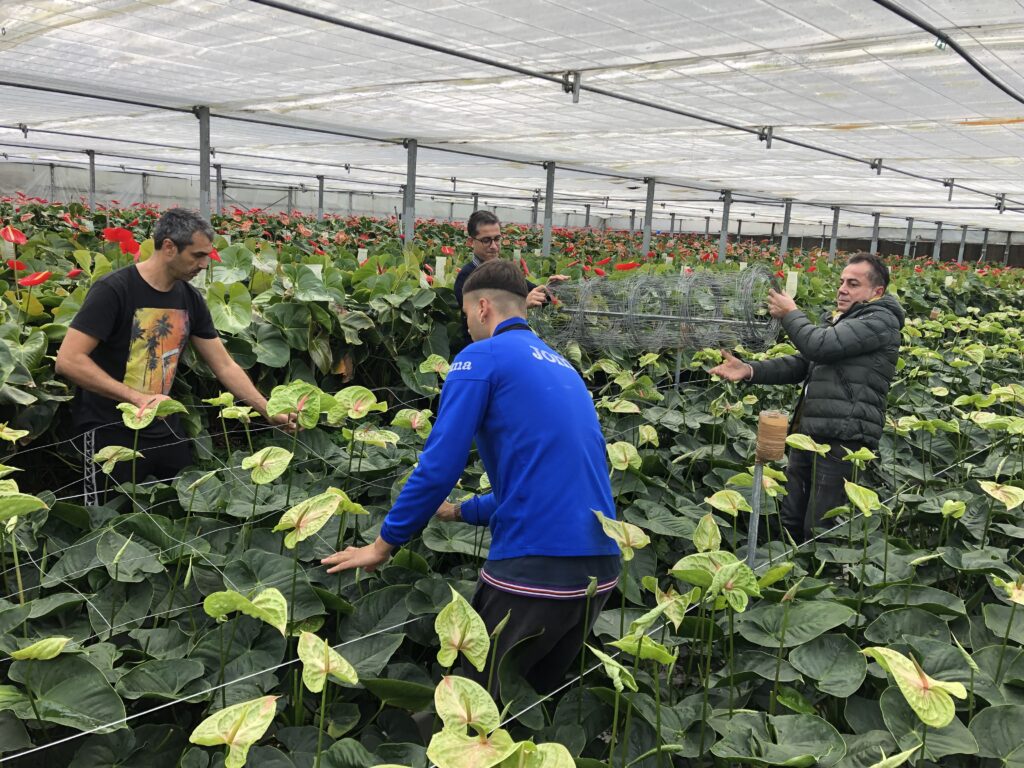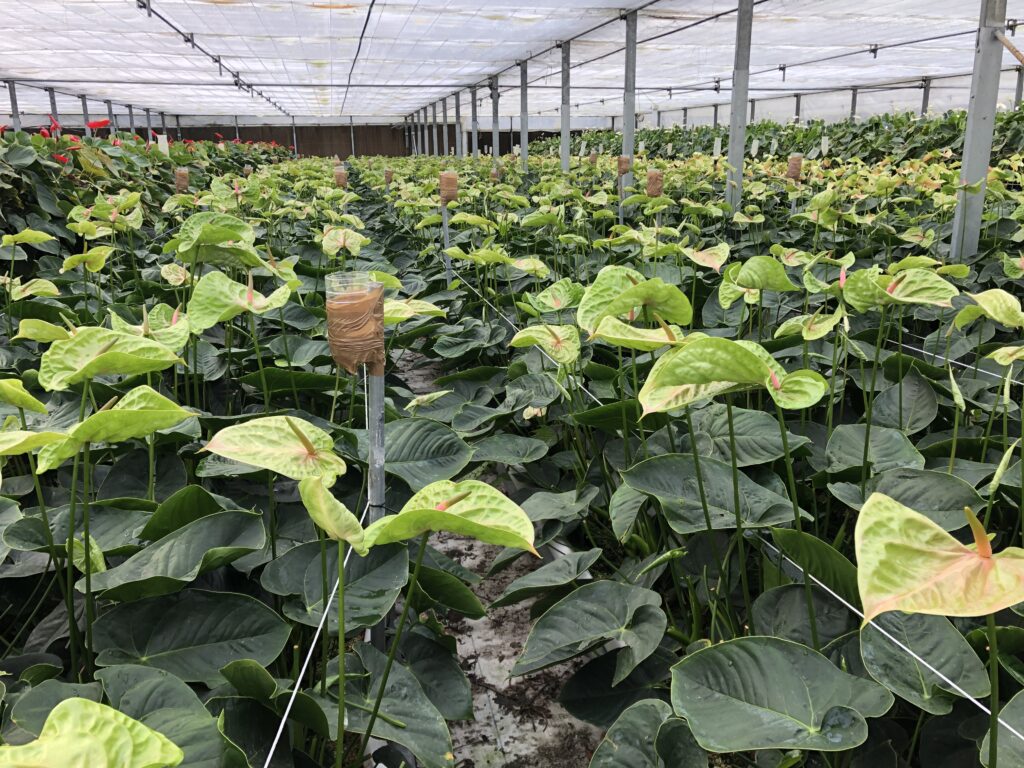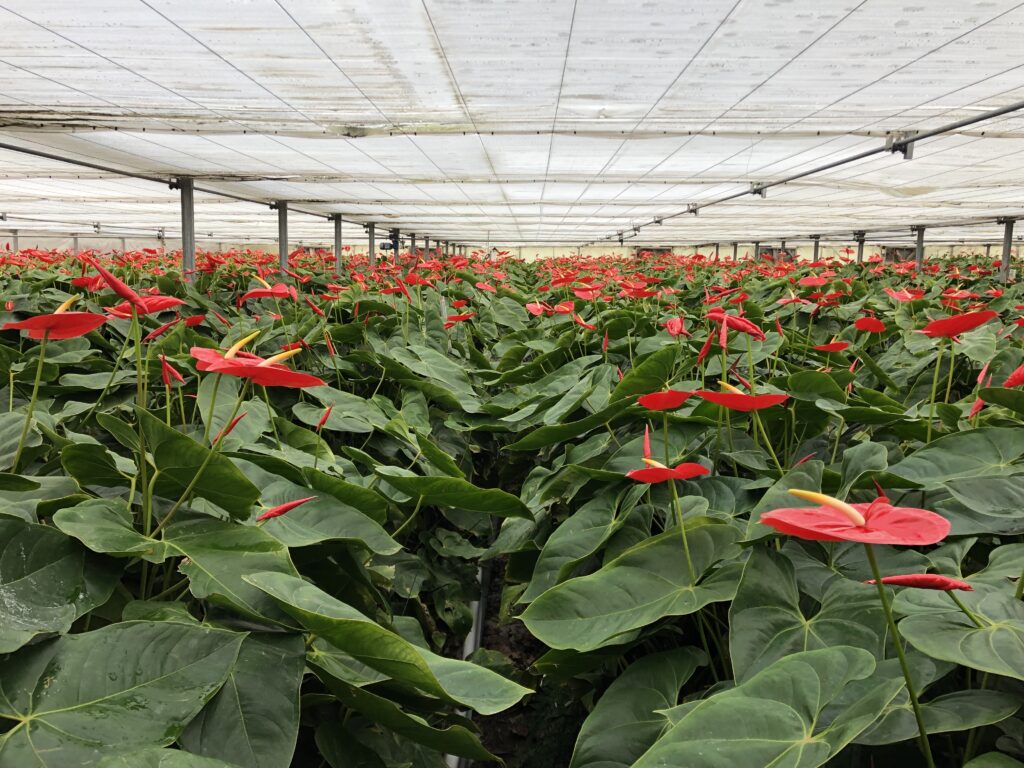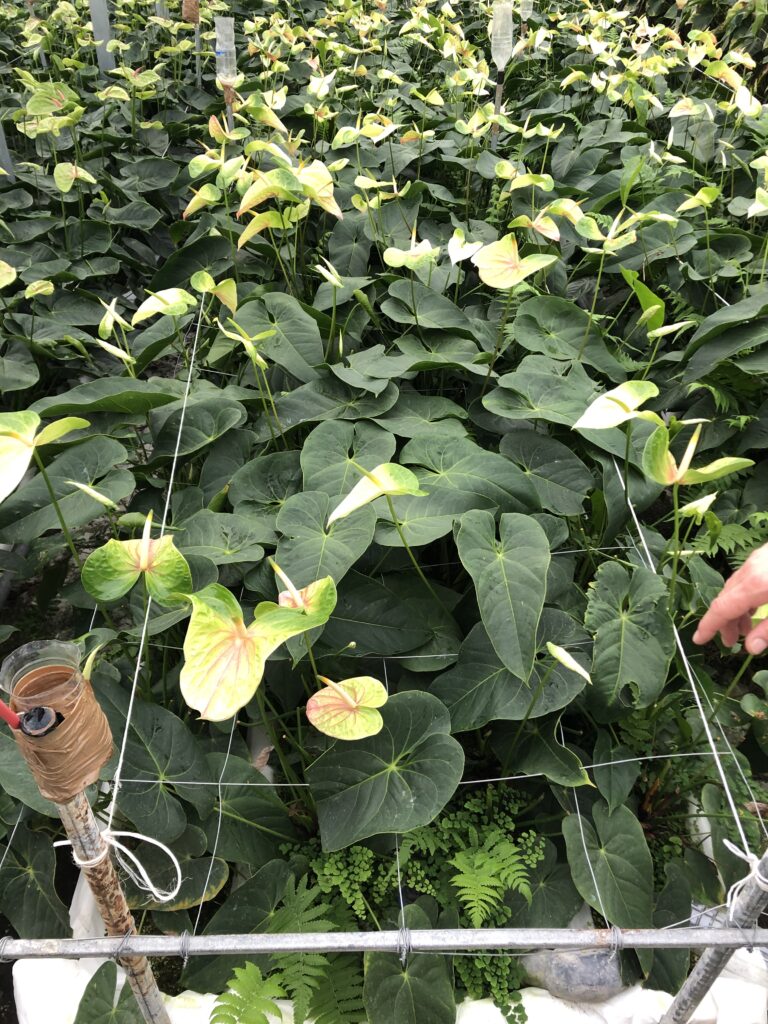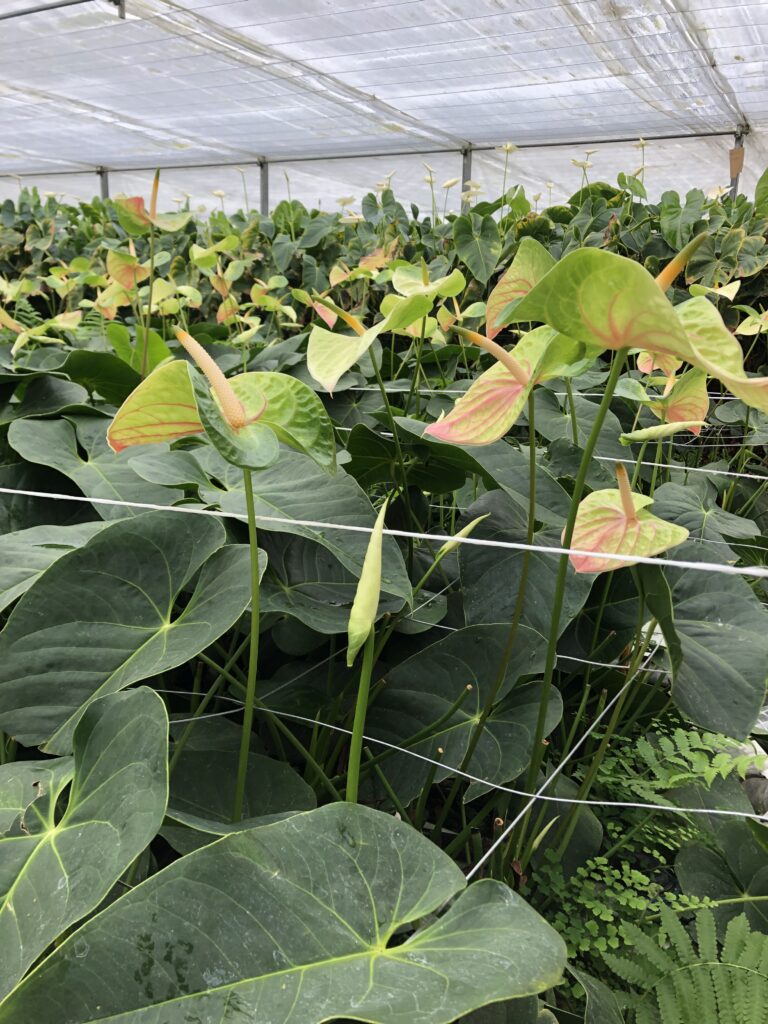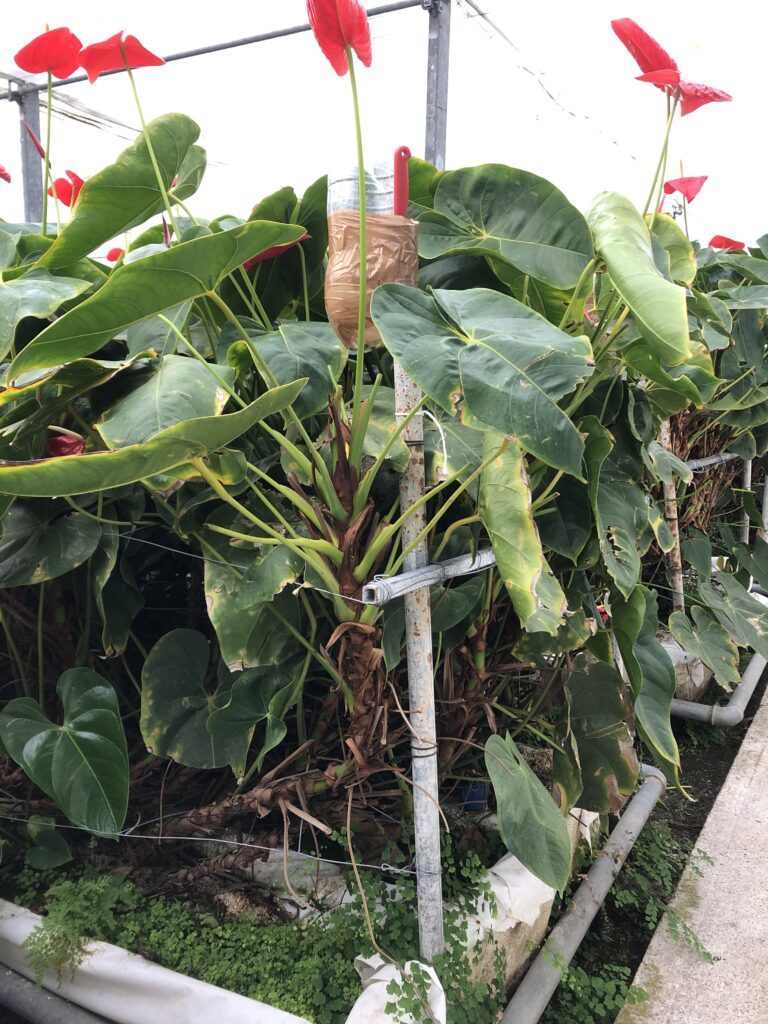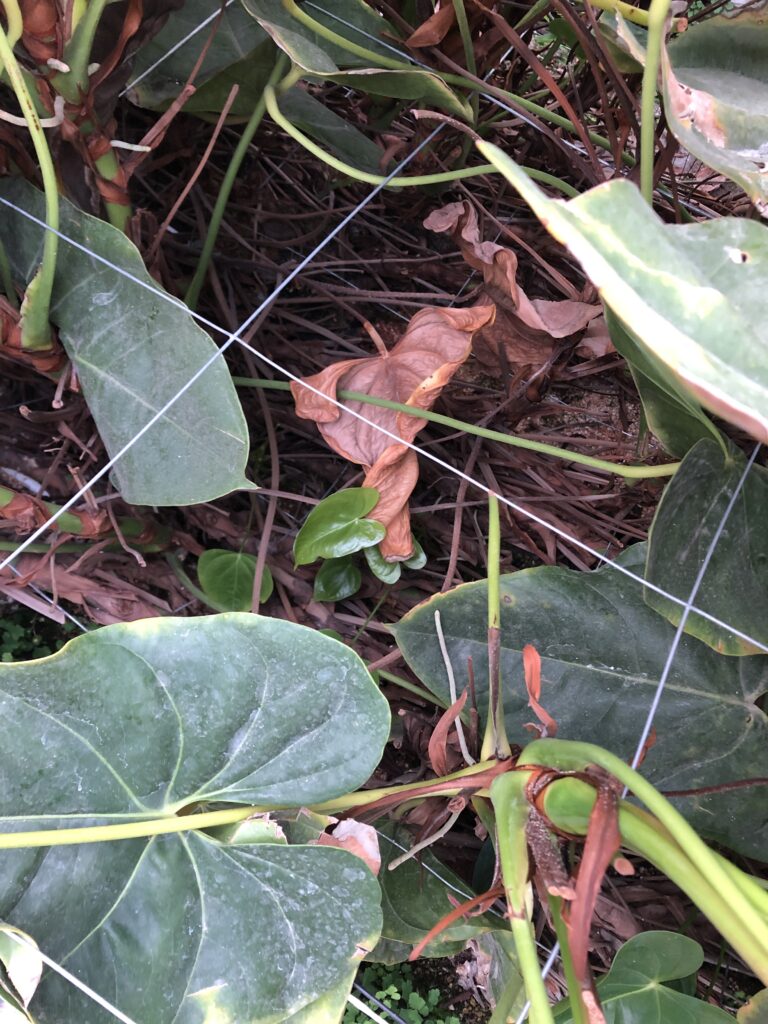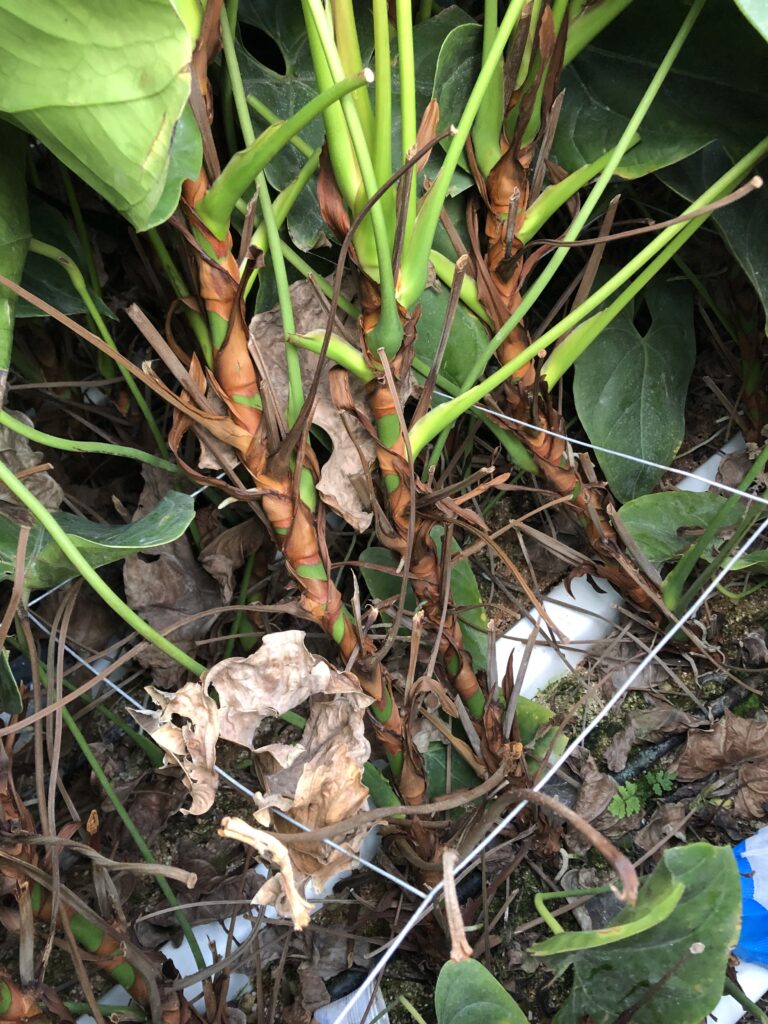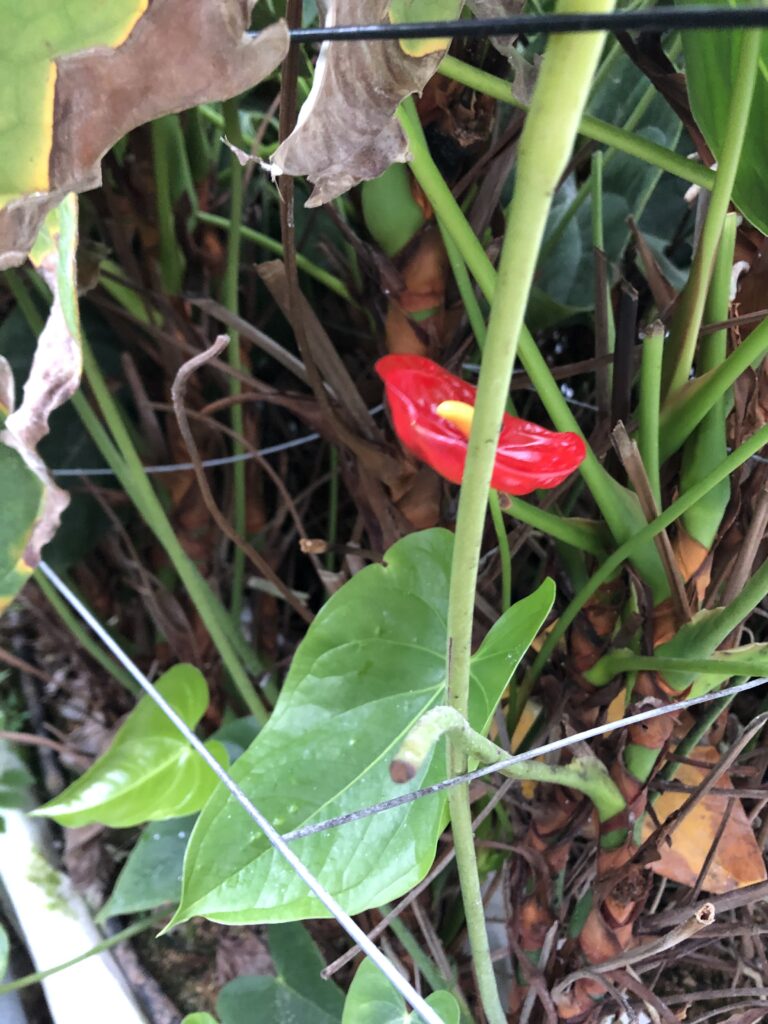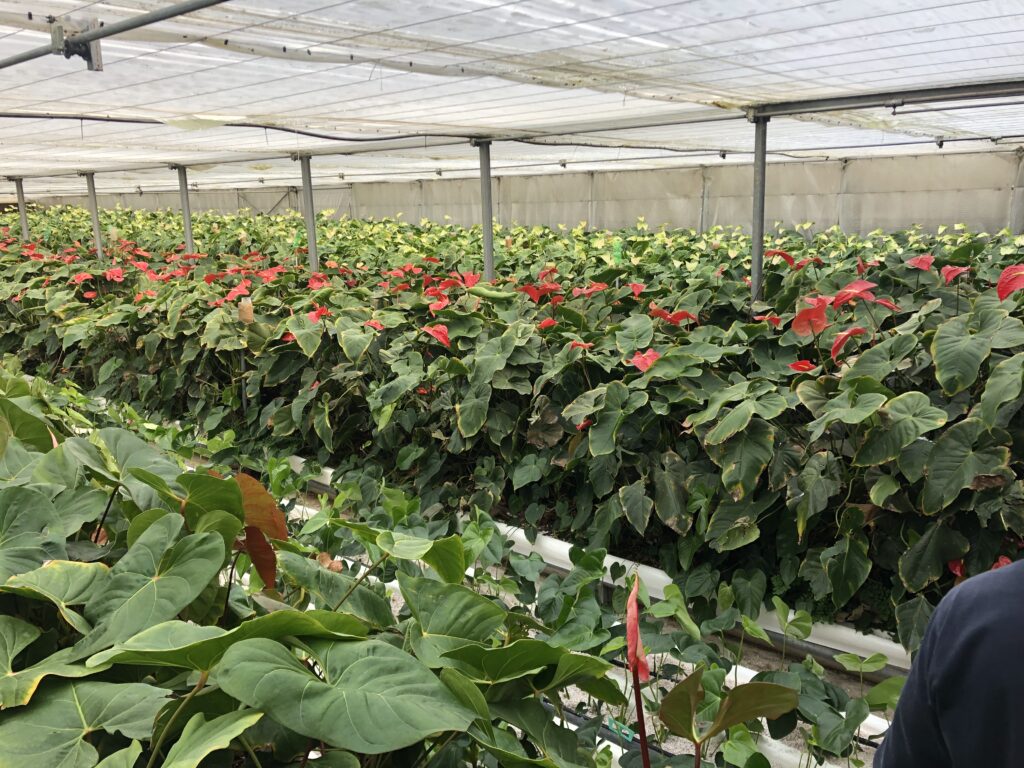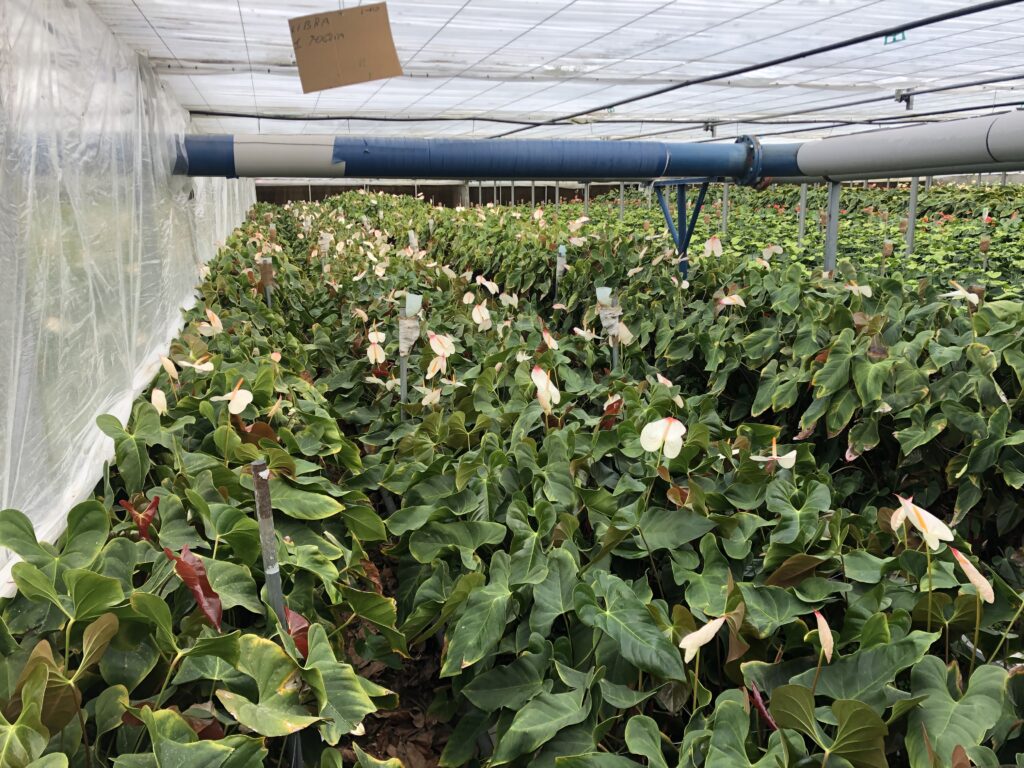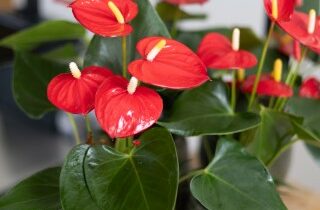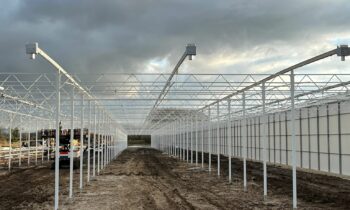Cultivation of Anthurium cut flowers using a self-developed crop support system
Every year, thousands of tourists visit the Bay of Naples. They come to enjoy everything the country has to offer, including the sun. What many visitors to this stunning location are not aware of is that many beautiful products grow and flourish in the Neapolitan greenhouses. Horticulture is flourishing in Italy thanks to its excellent light and sustained consumer demand. After all, everyone knows that Italians are passionate when it comes to fashion and interior design.
In the immediate vicinity of Vesuvius, there are several companies specializing in growing and marketing Anthurium cut flowers. Most growers have plastic greenhouses and use high-pressure spraying and pad/fan systems to humidify and cool them in the summer months. Sales are mainly done through the wholesale market.
Hans Prins (Account Manager Anthurium) and Andre Lont (Crop Specialist Anthurium) visited Somma Fratelli during their trip to Italy. The company, based in Gragnano (NA), is owned by the four brothers – Paolo, Guiseppe, Salvatore and Vincenzo – and grows Anthurium cut flowers. We talked to the brothers about their company and the development and application of their proprietary tool: Somma Guiding System (SGS).
When Hans and Andre arrived in Pompeii, many growers were still recovering from the extremely busy weeks leading up to All Saints Day on 1 November. The sales made during this period can be decisive for these companies’ turnovers. But before the flowers can be sold, the cultivation must, of course, run smoothly.
Can you briefly tell us about the growing area in which you are located?
The area in which we are located offers a number of essential factors which led people to opt for growing different products. One of those essentials is the presence of a wholesale market. This led to the emergence of companies producing cut flowers, attracting more buyers and growers. Thus the area has been able to develop into Italy’s most important cultivation area. Nowadays you can find both small and large growers, mostly real family businesses. The larger growers also have locations in the Battipaglia/Eboli (Salerno) area. It is about a 45-minute drive to the south and there is still room to grow. Because of the risk of Vesuvius erupting again, and also because of the lack of space, it is not possible to expand here.
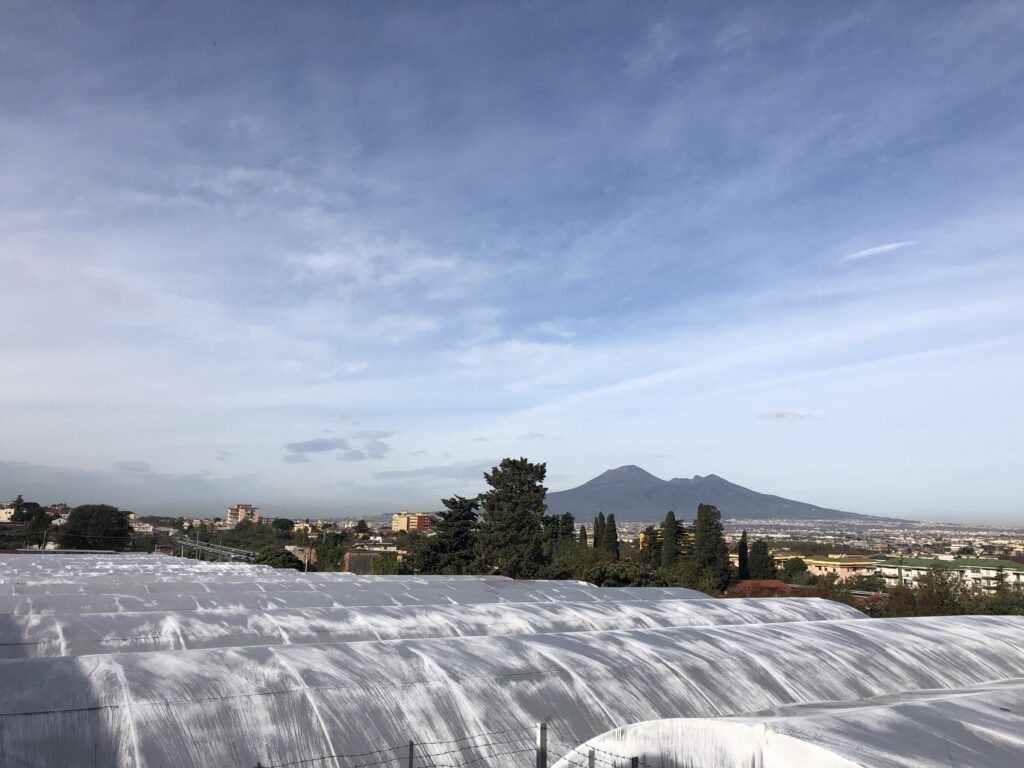
What can you tell us about the origins and history of the company?
With our mother we set up a small-scale cultivation of Dianthus 45 years ago. In fact, that was the start of our company. Our company is located at a height of about 80 metres, at the foot of a mountain. The soil turned out to be perfect for growing bulbous plants: Lily, Gladiolus, Zantedeschia and Curcumma. Through these crops we came into contact with the wedding segment and started talking to Tommaso Graziuzo (De Plantis S.R.L.) about Anthurium and Phalaenopsis. In 2005 we completely switched over to growing Anthurium.
What do your greenhouses look like?
We grow cut Anthurium on 1.3 ha in plastic greenhouses divided into six areas. The plants stand in gutters and grow in perlite. For cooling and humidification, we use pad/fan and high-pressure spraying. We regulate light in the summer with chalk on the deck. In winter we use a plastic screen.
What is the current structure of the company?
We are four brothers: Paolo (cultivation), Salvatore (packaging), while Vincenzo and I focus on sales. Although we also have customers on the farm, much of our sales are through the wholesale market. Also active in the area is Cooperativo del Golfo, to which approximately 300 growers are affiliated. Somma Fratelli has chosen to remain independent in terms of marketing and sales.
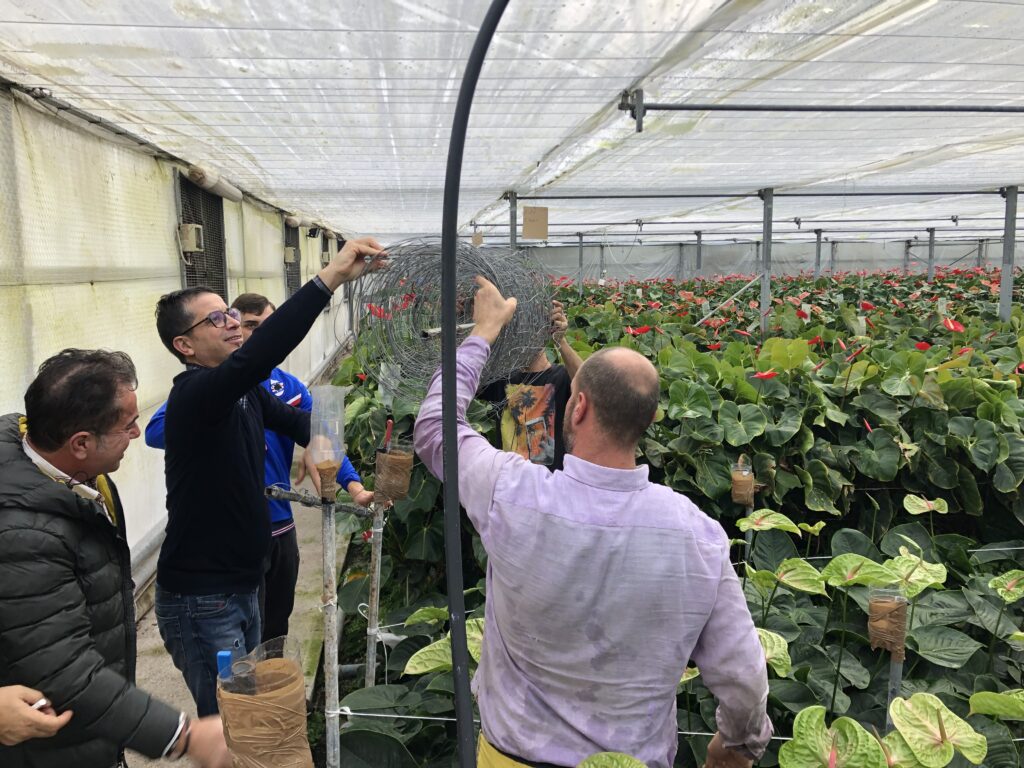
What is the strength of Somma Fratelli?
Somma Fratelli sells a brand and everyone in the company is aware of that. For example, we have chosen a striking pink colour for our packaging. This color is chic and at the same time it has a strong impact. It works very well, because the box is very recognizable. We lead the way in quality and our customers appreciate that.
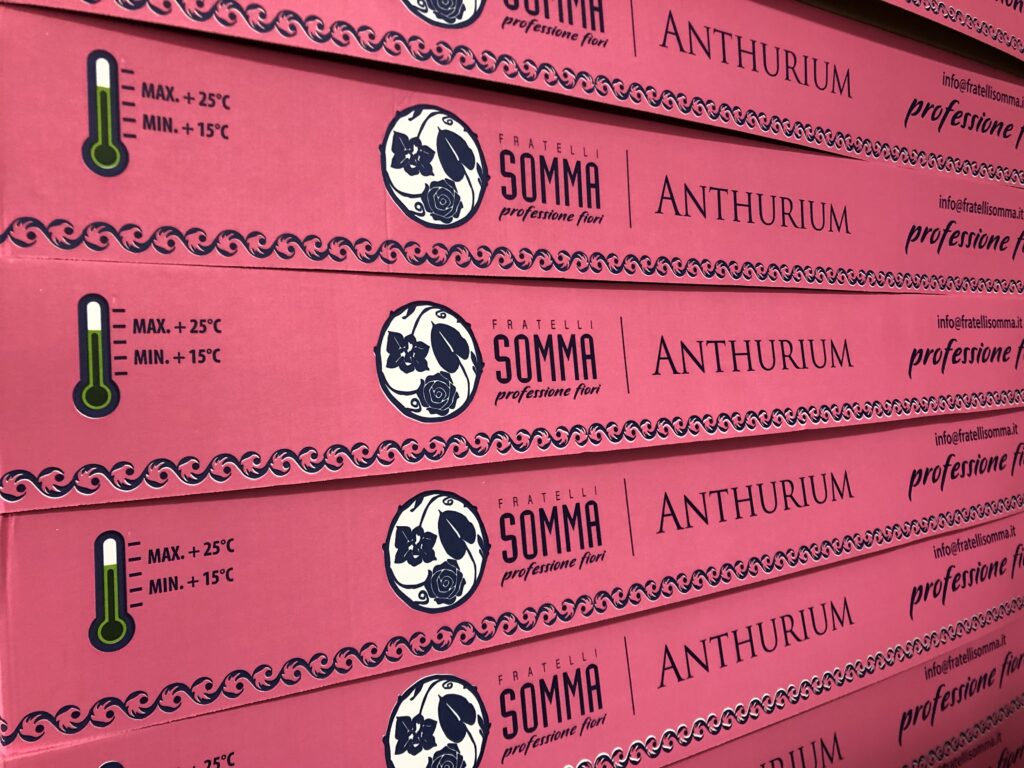
After Anthura introduced the Young Leaf Breaking’ (YLB) technique, you started using it too. What leaf strategies do you use and what are your experiences?
Yes, that’s right! That’s what I mean by quality, because we were one of the first growers to adopt this cultivation technique. In the cultivation of Anthurium cut flowers we focus mainly on key holidays. With YLB we can tailor the cultivation more to our liking. Thus we can start with YLB in the summer and reach peak production in the autumn (November 1st) with a slightly larger flower size. The extra energy goes to the next flower instead of the young leaf using the energy to grow. This is how we bring the light-coloured varieties into the right position to peak in the spring of 2022. It’s not even Christmas yet, but we’re already thinking about Easter! Of course, we also use the method of halving leaves to get more light into the crop.
Paolo, you are constantly busy with cultivation. A challenge in cultivation is plant fall. What was your biggest stumbling block?
The Anthurium plant produces first a leaf and then a flower. This process keeps repeating itself and eventually the plant gets too tall and starts to fall over. Some varieties start to fall after one-and-a-half years while others can hold out for five years. The problem with plant fall is that it never goes away and you have to guide the crop. If you don’t, the plants will fall in all directions and this means extra time in crop maintenance, plus the distribution of plants in the bed will no longer be correct. I was fed up with that and I wanted to decide for myself what the plants do and not the other way around. Through our chrysanthemum cultivation, we came up with the idea of mesh support. Supporting the crop did not feel natural and also caused a lot of quality loss due to damage to flowers. Also, guiding down the plants entails more production costs and we found that we had to wait too long for flowers after this cultivation operation. There was still some lily mesh in the shed and despite the fact that many people had their doubts, I gave it a try anyway. That was the start of the Paolo Somma Guiding System.
How does the Somma Guiding System (SGS) work?
In a young crop, mesh netting with a size of 30x30cm is placed and left in place during cultivation. If the plants grow too tall, the mesh is moved up in small increments. The plants are placed at a slight angle and can gradually get used to the new situation. Because of this step-by-step procedure, hardly any crop and/or plant damage occurs. For a technical explanation of SGS, please refer to the cultivation technique section.
‘By applying SGS, I determine what the plant does and not the other way around!’
What are the advantages of growing with crop support?
A good example of the SGS system is the Moments® variety. This bed is seven years old and the plants stand as if they were a young crop. Of course, it is controlled (at the bottom). The advantages of the system include lower labour costs in crop care, the fact that crops are constantly in full production, and 20%-30% less flower damage. It’s also important that the plants do not experience any stress. Plant fall always entails a risk of breakage (bending of stems) and root reduction. So we minimized that risk!
How do you replace the plants when there are multiple layers of mesh in the crop?
At the end of the cultivation period there are two to three layers of mesh in the crop. The lower layers are on the gutter and there is a layer in the crop. We cut the crop above the mesh, then we remove the mesh and reuse it. Then the rest follows on, no problem!
How do you see the future of the company?
We will continue to work on the Somma Fratelli brand and, of course, make plans for the future. In the vicinity of Salerno, we have plans to develop a new greenhouse for growing cut Anthurium, using the latest techniques, of course. After all, the next generation will be ready to continue the business in due course.
What do you think of the collaboration with Anthura?
It has benefited us a lot, both professionally and personally. We ended up in Anthurium cultivation because of DePlantis and we are satisfied with our cooperation with both companies. Anthura is always progressing, not only in the field of new varieties, but also in expertise, and they share that knowledge with us, the customer. We learn from this and it strengthens our position. Growing strong together!

